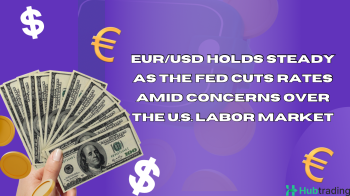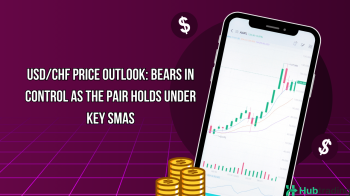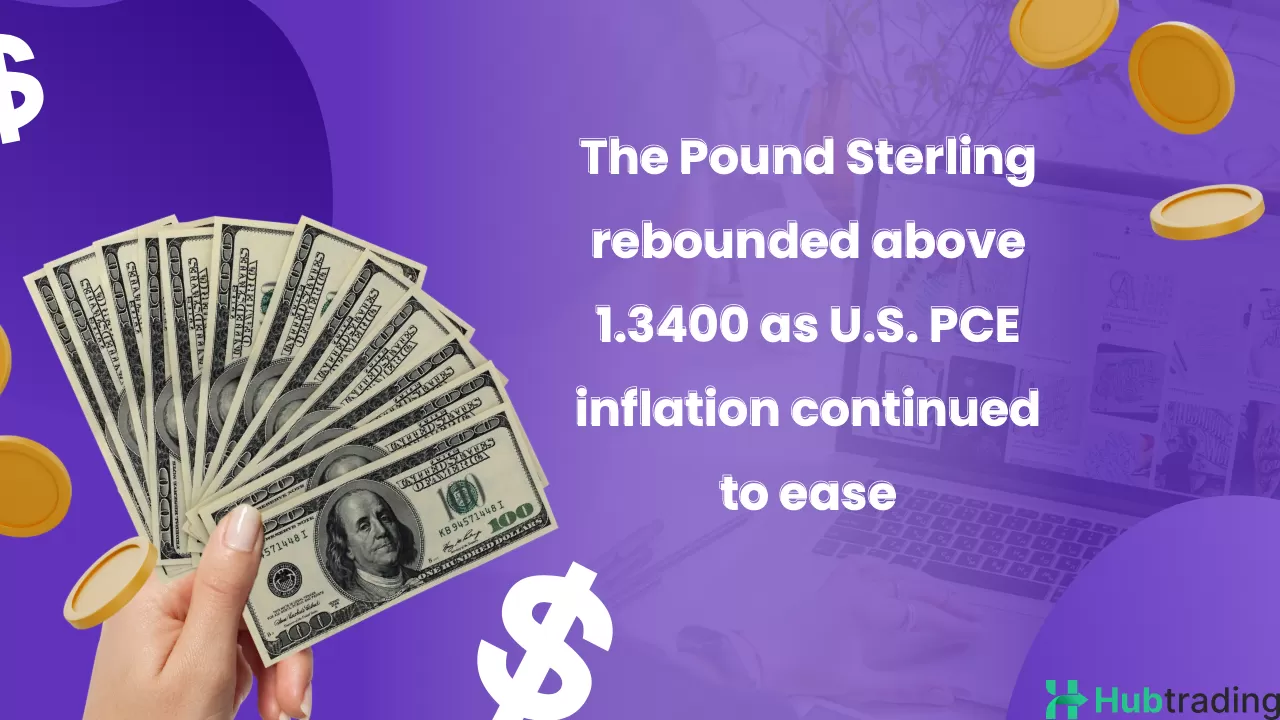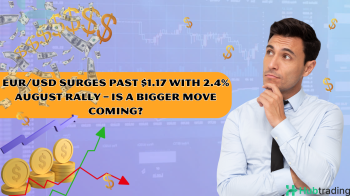-
The Euro holds steady as the US Dollar remains under pressure.
-
Softer US data and Trump's criticism of Powell boost expectations for additional Fed rate cuts.
-
EUR/USD hovers near 1.1700 as markets await the US PCE Price Index report.
The EUR/USD pair extends its winning streak for a seventh consecutive session, though it remains capped below the nearly four-year high of 1.1745 reached on Thursday. The pair is poised for a 2% weekly gain, supported by easing geopolitical tensions and growing expectations that the US Federal Reserve will implement two or even three rate cuts in the second half of the year.
US President Donald Trump's criticism of Fed Chair Jerome Powell and hints at choosing a more dovish successor have reinforced these expectations. Weak US economic data and increased calls within the Fed for a more accommodative stance have further fueled rate-cut speculation.
Recent data points to a slowing US economy. On Thursday, first-quarter GDP was revised downward to a 0.5% contraction from the previous 0.2%, while Tuesday’s Conference Board data showed a decline in Consumer Confidence, highlighting weakening growth momentum.
Meanwhile, sentiment in the Eurozone remains upbeat. The ongoing fragile truce between Israel and Iran continues to keep oil prices in check, easing inflation concerns. Additionally, optimism surrounds a proposed infrastructure and defense spending plan expected to be approved later this year, which could support regional growth.
Today, market attention turns to the US Personal Consumption Expenditures (PCE) Price Index. A soft inflation reading would likely strengthen the case for a Fed rate cut in September, potentially increasing downward pressure on the US Dollar.
Daily Digest Market Movers: Trump’s Fed Pressure and Weak US Data Drag the Dollar Lower
- The US Dollar came under heavy pressure this week, with the US Dollar Index (DXY) falling by around 1.7% over the past five days and extending its year-to-date decline to over 11% in 2025. A combination of deteriorating economic indicators, market concerns about President Trump’s unpredictable trade stance, and his increasingly aggressive rhetoric toward the Federal Reserve has weighed heavily on the Greenback.
- Trump escalated his criticism of Fed Chair Jerome Powell, labeling him “terrible” and “an average mentally person,” after Powell reiterated a cautious stance on interest rates. Trump also hinted at naming Powell’s successor as early as this summer, despite more than six months remaining in the Chair’s current term. These remarks have intensified expectations of Fed rate cuts and raised alarm bells over the central bank's independence—an issue that risks undermining the US Dollar's status as the world’s primary reserve currency.
- In the Eurozone, economic sentiment data painted a mixed picture. The Economic Sentiment Indicator slipped to 94.0, missing expectations of a rise to 95.1 from May's 94.8. The Business Climate Index fell to -0.78 from -0.57, while Consumer Confidence held steady at -15.3. On the upside, Services Sentiment improved to 2.9, beating forecasts of a drop to 1.6.
- Inflation in the bloc’s major economies showed signs of acceleration. France’s preliminary CPI rose more than expected, although consumer spending moderated less than feared. Spain also posted stronger consumer inflation for June and a rebound in retail sales for May.
- On the US side, macroeconomic figures continue to point to a slowdown. The first quarter's GDP growth was revised downward to a 0.5% contraction, primarily due to declining consumer spending and the impact of higher tariffs introduced by Trump. While Durable Goods Orders surprised to the upside—soaring by 16.4% in May, driven by aircraft orders—core orders excluding transportation rose just 0.5%, in line with tepid demand.
- Labor market data offered mixed signals. Initial jobless claims rose less than expected, but continuing claims remain elevated at post-pandemic highs, suggesting sustained pressure on the employment front. This further bolsters the case for the Fed to ease monetary policy.
- All eyes now turn to the US Personal Consumption Expenditures (PCE) Price Index—arguably the Fed's preferred inflation gauge. Headline inflation is expected to hold steady at 0.1% month-on-month in May, with annual growth accelerating slightly to 2.3% from April’s 2.1%. The core PCE is also forecast to rise 0.1% monthly and 2.6% year-on-year, up from 2.5%. A softer-than-expected reading could strengthen the case for a September rate cut and put more downward pressure on the USD.
EUR/USD Technical Outlook: Bullish but Capped Near Highs
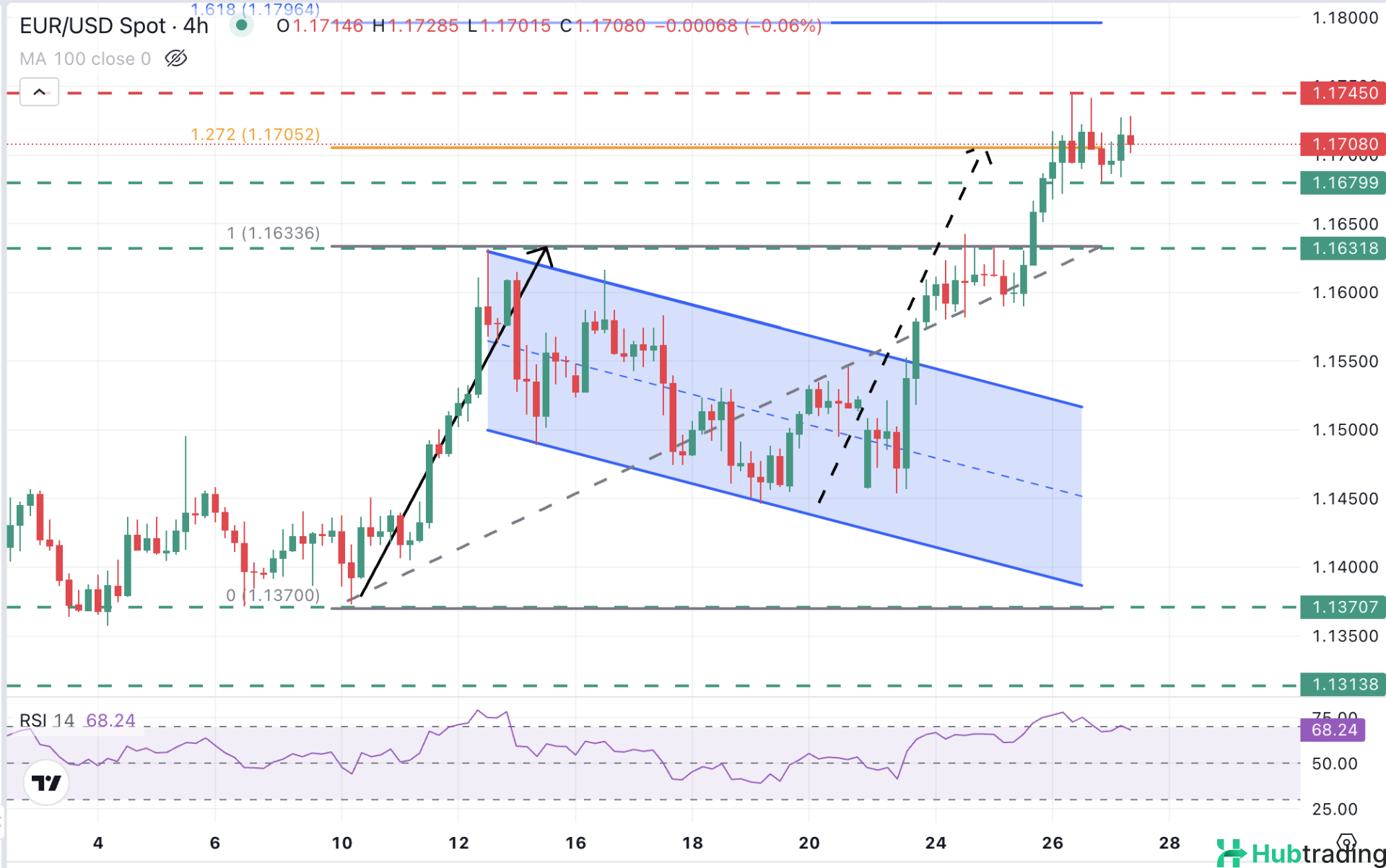
The EUR/USD pair remains in a firm uptrend on Friday, buoyed by broad-based US Dollar weakness. The pair has reached the upper target of its bullish flag pattern from earlier this month, testing resistance slightly above 1.1700. However, further gains may require a fresh catalyst—likely in the form of a dovish PCE inflation outcome.
For now, EUR/USD is likely to trade sideways as markets await the PCE data. On the downside, the pair finds initial support at 1.1680, followed by the former resistance-turned-support zone at 1.1630–1.1640 (the highs from June 24–25).
On the upside, immediate resistance is seen at Thursday’s high of 1.1745. A breakout above this could open the path toward the 161.8% Fibonacci extension of the June 10–12 rally, located at 1.1795.

